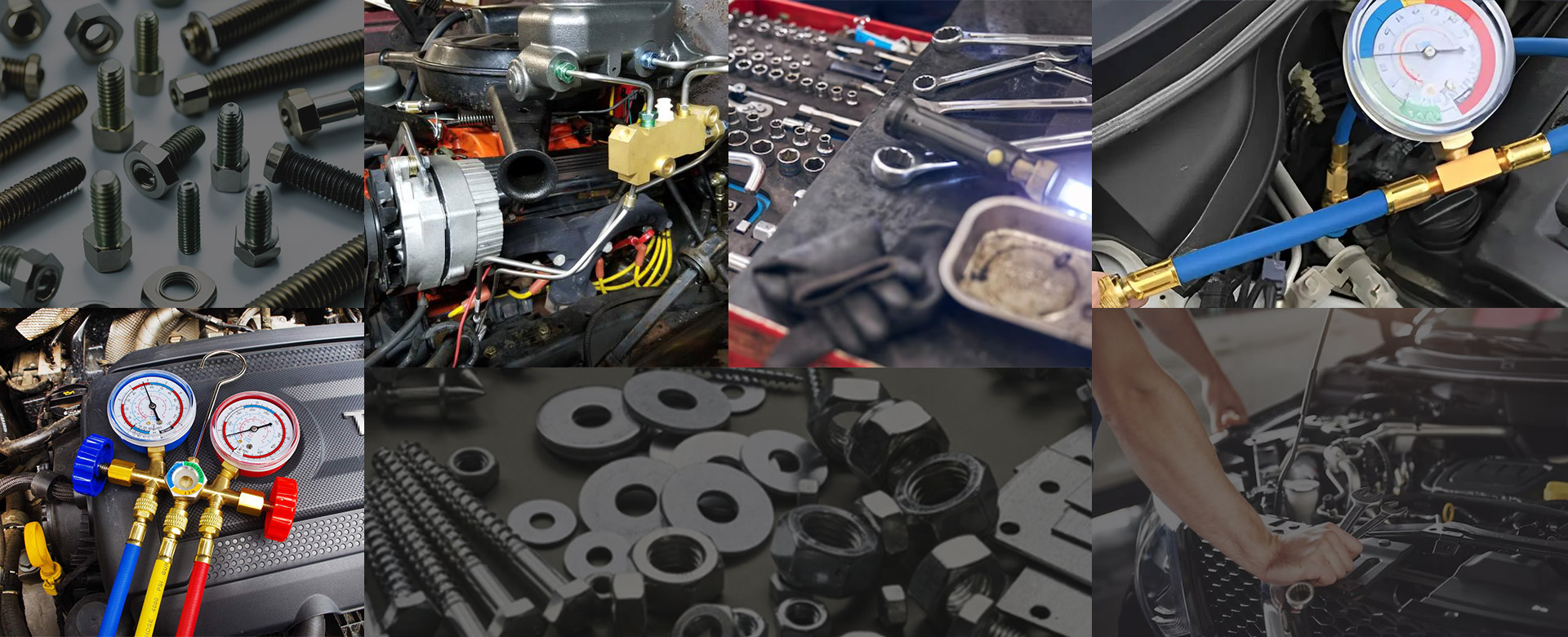Understanding Manifold Gauges: A Comprehensive Overview
22 Dec 2023
Introduction
Manifold gauges play a crucial role in the field of HVAC (Heating, Ventilation, and Air Conditioning) systems, providing technicians with vital information about the refrigerant pressure and temperature. In this article, we will delve into the components, functions, and applications of manifold gauges, shedding light on their significance in maintaining and troubleshooting HVAC systems.
What is a Manifold Gauge?
A manifold gauge is a diagnostic tool used by HVAC professionals to measure and analyze the pressure and temperature of refrigerants in air conditioning and refrigeration systems. It consists of a set of gauges, hoses, and valves that allow technicians to connect to different points in the system.
Components of a Manifold Gauge
1. Pressure Gauges
The primary components of a manifold gauge are the pressure gauges. These gauges, typically in red (high-pressure side) and blue (low-pressure side), provide real-time readings of the system's refrigerant pressure. The readings help technicians assess the system's health and performance.
2. Hoses
Manifold gauges are equipped with hoses that connect the gauges to the refrigeration system. These hoses are designed to handle the high pressures associated with refrigerants and ensure a secure and leak-free connection.
3. Valves
Valves on the manifold gauge control the flow of refrigerant and allow technicians to isolate specific sections of the system. The valves also enable the technician to perform tasks like refrigerant charging, recovery, and evacuation.
4. Manifold Body
The manifold body serves as the central hub, housing the pressure gauges, valves, and connection ports. It is typically constructed from durable materials to withstand the rigors of HVAC service.
Functions of Manifold Gauges
1. Pressure Measurement
The primary function of manifold gauges is to measure the high and low-side pressures of the refrigeration system. This information is critical for determining whether the system is operating within the specified parameters.
2. Temperature Measurement
Some advanced manifold gauges come equipped with temperature sensors or probes. These sensors allow technicians to measure the temperature of the refrigerant at different points in the system, aiding in diagnostics and system optimization.
3. Refrigerant Charging and Recovery
Manifold gauges facilitate the controlled addition or removal of refrigerant from the system. This is crucial for maintaining the correct refrigerant charge, which is essential for optimal system performance.
4. System Troubleshooting
Technicians use manifold gauges to troubleshoot HVAC systems by analyzing pressure and temperature readings. Deviations from normal values can indicate issues such as leaks, blockages, or compressor problems.
Applications of Manifold Gauges
1. Routine Maintenance
HVAC systems require regular maintenance to ensure efficient operation. Manifold gauges assist technicians in checking and adjusting refrigerant levels, identifying leaks, and verifying overall system health.
2. System Installation and Commissioning
During the installation of a new HVAC system, manifold gauges are used to charge the system with the correct amount of refrigerant. They also help ensure that the system operates within the specified pressure and temperature ranges.
3. Refrigerant Retrofitting
When upgrading or retrofitting an existing HVAC system with a new refrigerant, manifold gauges play a crucial role. Technicians use them to evacuate the old refrigerant, charge the system with the new refrigerant, and verify its performance.
Best Practices for Using Manifold Gauges
1. Proper Hose Connections
Ensuring secure and leak-free hose connections is vital to prevent refrigerant leaks and inaccuracies in pressure readings. Technicians must follow manufacturer guidelines for connecting hoses to the system.
2. Regular Calibration
To maintain accuracy, manifold gauges should be calibrated regularly. Calibration ensures that the pressure and temperature readings provided by the gauges are precise and reliable.
3. Safety Precautions
Working with refrigerants poses safety risks, and technicians must adhere to proper safety protocols. This includes wearing appropriate personal protective equipment and following guidelines for handling refrigerants safely.
Conclusion
In conclusion, manifold gauges are indispensable tools for HVAC professionals, providing essential information for the installation, maintenance, and troubleshooting of air conditioning and refrigeration systems. Understanding the components, functions, and best practices associated with manifold gauges is crucial for ensuring the longevity and efficiency of HVAC systems.

Manifold gauges play a crucial role in the field of HVAC (Heating, Ventilation, and Air Conditioning) systems, providing technicians with vital information about the refrigerant pressure and temperature. In this article, we will delve into the components, functions, and applications of manifold gauges, shedding light on their significance in maintaining and troubleshooting HVAC systems.
What is a Manifold Gauge?
A manifold gauge is a diagnostic tool used by HVAC professionals to measure and analyze the pressure and temperature of refrigerants in air conditioning and refrigeration systems. It consists of a set of gauges, hoses, and valves that allow technicians to connect to different points in the system.
Components of a Manifold Gauge
1. Pressure Gauges
The primary components of a manifold gauge are the pressure gauges. These gauges, typically in red (high-pressure side) and blue (low-pressure side), provide real-time readings of the system's refrigerant pressure. The readings help technicians assess the system's health and performance.
2. Hoses
Manifold gauges are equipped with hoses that connect the gauges to the refrigeration system. These hoses are designed to handle the high pressures associated with refrigerants and ensure a secure and leak-free connection.
3. Valves
Valves on the manifold gauge control the flow of refrigerant and allow technicians to isolate specific sections of the system. The valves also enable the technician to perform tasks like refrigerant charging, recovery, and evacuation.
4. Manifold Body
The manifold body serves as the central hub, housing the pressure gauges, valves, and connection ports. It is typically constructed from durable materials to withstand the rigors of HVAC service.
Functions of Manifold Gauges
1. Pressure Measurement
The primary function of manifold gauges is to measure the high and low-side pressures of the refrigeration system. This information is critical for determining whether the system is operating within the specified parameters.
2. Temperature Measurement
Some advanced manifold gauges come equipped with temperature sensors or probes. These sensors allow technicians to measure the temperature of the refrigerant at different points in the system, aiding in diagnostics and system optimization.
3. Refrigerant Charging and Recovery
Manifold gauges facilitate the controlled addition or removal of refrigerant from the system. This is crucial for maintaining the correct refrigerant charge, which is essential for optimal system performance.
4. System Troubleshooting
Technicians use manifold gauges to troubleshoot HVAC systems by analyzing pressure and temperature readings. Deviations from normal values can indicate issues such as leaks, blockages, or compressor problems.
Applications of Manifold Gauges
1. Routine Maintenance
HVAC systems require regular maintenance to ensure efficient operation. Manifold gauges assist technicians in checking and adjusting refrigerant levels, identifying leaks, and verifying overall system health.
2. System Installation and Commissioning
During the installation of a new HVAC system, manifold gauges are used to charge the system with the correct amount of refrigerant. They also help ensure that the system operates within the specified pressure and temperature ranges.
3. Refrigerant Retrofitting
When upgrading or retrofitting an existing HVAC system with a new refrigerant, manifold gauges play a crucial role. Technicians use them to evacuate the old refrigerant, charge the system with the new refrigerant, and verify its performance.
Best Practices for Using Manifold Gauges
1. Proper Hose Connections
Ensuring secure and leak-free hose connections is vital to prevent refrigerant leaks and inaccuracies in pressure readings. Technicians must follow manufacturer guidelines for connecting hoses to the system.
2. Regular Calibration
To maintain accuracy, manifold gauges should be calibrated regularly. Calibration ensures that the pressure and temperature readings provided by the gauges are precise and reliable.
3. Safety Precautions
Working with refrigerants poses safety risks, and technicians must adhere to proper safety protocols. This includes wearing appropriate personal protective equipment and following guidelines for handling refrigerants safely.
Conclusion
In conclusion, manifold gauges are indispensable tools for HVAC professionals, providing essential information for the installation, maintenance, and troubleshooting of air conditioning and refrigeration systems. Understanding the components, functions, and best practices associated with manifold gauges is crucial for ensuring the longevity and efficiency of HVAC systems.


